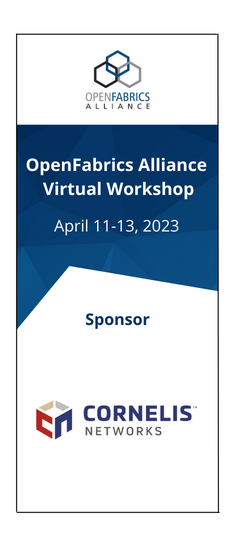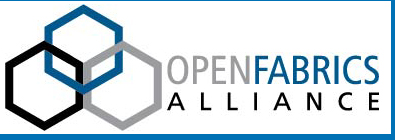2023 OFA Virtual Workshop Agenda
The 19th annual OpenFabrics Alliance (OFA) Workshop occurred virtually April 11-13, 2023. The OFA Workshop is a premier means of fostering collaboration among those who develop fabrics, deploy fabrics, and create applications that rely on fabrics. It is the only event of its kind where fabric developers and users can discuss emerging fabric technologies, collaborate on future industry requirements, and address problems that exist today.
LIST OF ACCEPTED ABSTRACTS AVAILABLE FOR DOWNLOAD
Tuesday, April 11
*KEYNOTE* The Next Decade of Networking: Challenges and Opportunities
Aditya Akella, University of Texas at Austin
8:00-9:00am

"Hey CAI” - Conversational AI Enabled UserInterface for HPC Tools
Hari Subramoni, The Ohio State University
9:00-9:30am
High-Performance and Scalable Support for Big Data Stacks with MPI
Aamir Shafi, The Ohio State University
9:30-10:00am
Break
10:00-10:30am
Addressing Endpoint-induced Congestion in a Scale-Out Accelerator Domain
Timothy Chong, Intel Corp.
10:30-11:00am
Accelerating Scientific Computing Workloads with InfiniBand DPUs
Richard Graham, NVIDIA
11:00-11:30am
Peer Provider Composability in libfabric
Sean Hefty, Alexia Ingerson, Jianxin Xiong, Intel Corp.
11:30am-12:30pm
Wednesday, April 12
*KEYNOTE* UCIe™: Building an Open Ecosystem of Chiplets for On-package Innovations
Debendra Das Sharma, UCIe Consortium
8:00-9:00am
Introducing Compute Express Link™ (CXL™) 3.0: Expanding Fabric Capabilities and Management
Mahesh Wagh, CXL Consortium
9:00-9:30am
Booting Your OS Across the NVMe® over Fabrics (NVMe-oF™) Transport – NVMe Boot Specification
Phil Cayton, NVM Express
9:30-10:00am
Break
10:00-10:30am
Using the FSDP for upstream CI on RDMA Hardware
Doug Ledford, Red Hat, Inc.
10:30-11:00am
OpenFabrics Management Framework for Composable Distributed Systems
Michael Aguilar, Sandia National Labs
11:00am-11:30am
Diving into the New Wave of Storage Management
Richelle Ahlvers, Intel Corp.
11:30am-12:30pm
Thursday, April 13
Congestion Management for Multicast on ROCE v2
Christoph Lameter, Deutche Boerse AG
8:00-8:30am
iCheck: Leveraging RDMA and Malleability for Application-Level Checkpointing in HPC Systems
Jophin John, Technical University of Munich
8:30-9:00am
DPFS: DPU-powered File System Virtualization
Peter-Jan Gootzen, IBM Research Zurich
9:00-9:30am
RDMA and Linux TCP
Shrijeet Mukherjee, Enfabrica
9:30-10:00am
Break
10:00-10:30am
Status of OpenFabrics Interfaces (OFI) Support in MPICH
Yanfei Guo, Argonne National Laboratory
10:30-11:00am
Open MPI and Libfabric on the Frontier Supercomputer
Amir Shehata, Oak Ridge National Lab
11:00am-11:30am
Supporting an Upstream First Kernel Driver for HPC Fabrics
Dennis Dalessandro, Cornelis Networks
11:30am-12:00pm
OPX Libfabric Provider - Update and Discussion of Performance Improvement Techniques
Tim Thompson, Cornelis Networks
12:00pm-12:30pm
Designing Networking Stacks for ML Frameworks
Raghu Raja, Enfabrica
12:30pm-1:00pm

